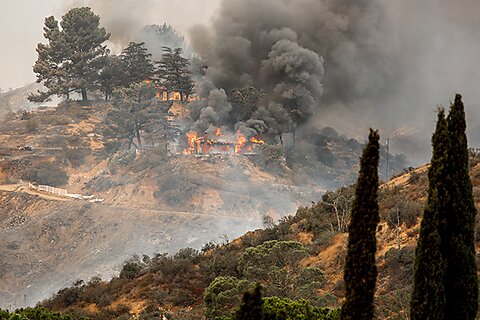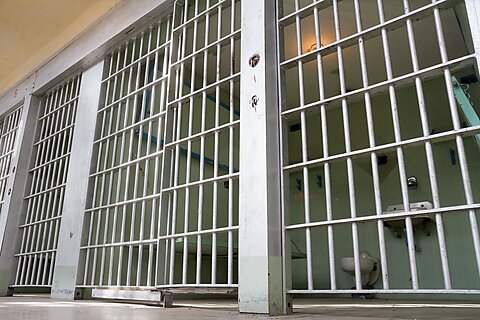
The horrific wildfires in the Los Angeles area have spawned concerns about government responsibility for the severe destruction. While it’s premature to assign blame definitively, California’s policies are being scrutinized as the state invariably looks to federal taxpayers for billions of dollars in assistance.
Distorted Incentives
A fundamental question is the prudency of residential development in these fire-prone areas. Wildfires existed well before the area was settled, so the risk has long been understood. More than a quarter of Californians live in natural areas mixed with human development called a wildland-urban interface (WUI), which is susceptible to forest fires.
People insure their property to minimize the financial cost of damage or loss from a wildfire: absent government interference, the higher the risk, the higher the insurance price, and vice versa. California, however, distorted price signals by capping homeowner insurance rates below market levels. Indeed, California has “the biggest gap between rates and risk in the nation.”
As Ryan Bourne and Sophia Bagley explain, state price controls prevented insurers from adjusting rates based on future wildfire risks, delaying approvals and suppressing necessary increases. Insurers were also prevented from passing rising reinsurance costs onto consumers.
Misleading homeowners about wildfire risks encouraged development in fire-prone areas and reduced incentives for additional fire protection. It also led to fewer policies in high-risk areas, forcing many into costly, limited-coverage alternatives or no insurance. Major insurers have exited, exposing homeowners to financial ruin and threatening to overburden the state-run Fair Access to Insurance Requirements (FAIR) insurer of last resort.
California Insurance Commissioner Ricardo Lara issued regulations in late December allowing insurance companies to factor in wildfire risk and reinsurance cost into coverage pricing. However, the regulations could be challenged in court by so-called consumer advocates. In the fire’s wake, Lara placed a one-year moratorium on insurance cancelations and non-renewals in the affected ZIP codes. Private insurance companies operating in California must also cover FAIR losses that exceed reserves. Thus, insurers could try to raise rates further on lower-risk policyholders to compensate or leave the market altogether.
There is debate about whether better government fire prevention (e.g., prescribed burns and brush clearing) could have lessened the severity of the Los Angeles fires. In contrast, it appears clearer that government fire suppression has increased the incentive to live in areas prone to wildfires and reduced the incentive for property owners to undertake sufficient fire mitigation efforts.
A 2019 study found that government fire suppression “represents a large transfer to a few landowners in high-risk, low-density places.” It noted the incentive problem of “free” fire protection on homes in WUIs:
The promise of aggressive firefighting at no cost may reduce private incentives to choose fire-proof building materials and clear brush around homes, actions that can decrease the threat to homes during a wildfire. Similarly, federally financed firefighting limits incentives for cities and states to create and enforce wildland building codes and defensible space regulations.
The authors suggest mitigating these disincentives by requiring homebuilders to pay a fee commensurate with expected protection costs or assigning firefighting costs to local governments, which property taxes or fees would cover. They also mention aligning insurance prices with the actual risk—if “legally and politically feasible.”
California’s Response
California’s cumbersome regulatory environment gained notoriety well before the recent fires. So, it was welcome when Gov. Gavin Newsom announced an executive order suspending state environmental laws in areas affected by the fire to speed up the rebuild. However, that begs the question: why not pursue reforms to these inhibitive laws that make housing construction in the rest of the state so costly? A mid-tier home in California is twice as expensive as the same home in the US.
Easing restrictive housing measures in the denser neighborhoods of Los Angeles would be particularly useful since it’s one of the most expensive cities in the country. After all, does it make sense to undertake a complete rebuild in those areas that will continue to be susceptible to fires while simultaneously making it difficult for its beleaguered residents to obtain housing in safer areas?
Newsom and Los Angeles Mayor Karen Bass are also cracking down on alleged “price gouging.”
Newsom’s executive order also included a provision to limit price increases on building materials, construction, and other goods and services. However, any good economist would tell the governor that higher prices in response to short-term scarcity encourage suppliers – including those from other states – to make more goods and services available. Otherwise, the result is prolonged shortages. That’s the opposite of what the affected areas need.
Bass has initiated a crackdown on landlords raising rents in response to the imbalance between the local supply and demand for housing. When wildfire-induced rent spikes occur, they signal a housing supply collapse, incentivizing displaced families to rebuild quickly and property owners to supply more housing. Suppressing these price signals can slow recovery efforts by reducing the urgency to repair and rebuild.
Last, another executive order issued by Newsom prohibits anyone from offering owners in the affected areas the option to sell their property for less than the “fair market value” (whatever that is). Maybe some people would prefer to sell their property at a lower-than-ideal price because they now place more value on living in a less fire-prone area. Maybe those who weren’t insured or had minimal coverage would prefer to sell their land instead of undergoing an exhausting rebuild. A natural disaster should not impair the freedom to choose whether to sell one’s property just because a paternalistic politician says so.
Federal Aid
State and local governments and the private sector traditionally shouldered disaster response responsibility. However, the decentralized approach has eroded over the past thirty years, and the federal government has spent $12 trillion on various emergencies since.
In a piece on the National Flood Insurance Program, Peter Van Doren notes what economist James Buchanan called the Samaritan’s dilemma: either render aid after a natural disaster or withhold aid to incentivize localized efforts to mitigate potential losses in disaster-prone areas. Like the wildfire situation in California, subsidized flood insurance promotes development in flood-prone regions of the US by transferring financial risk from homeowners to the public.
In the wake of the California wildfires, some congressional Republicans have said federal aid to the state should be conditioned on reforms to state policies they believe are responsible for the disaster. Setting aside the political motivations behind this suggestion, singling out California’s wildfire problem misses the bigger picture. Whether it’s wildfires in California or flooding in Louisiana, an unending flow of federal subsidies has disincentivized state and local policymakers from taking sufficient steps to lessen the chances of catastrophic destruction in the first place.
In the meantime, let’s hope California’s policymakers learn the proper economic lessons and avoid making the recovery more difficult.
(For more, see Scott Lincicome on how bad policy and incentives fueled Los Angeles’ destruction, as well as this podcast with Ryan Bourne and Stephen Slivinski on the same.)



